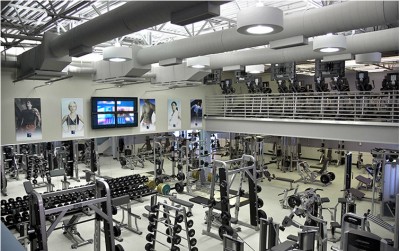As another step in the pre-transplant testing phase, Dad started his day with 20 vials of blood drawn. The blood will be tested for additional organ functions and past exposure to diseases. Dad’s white blood cell count was lower today at 1.74. His hemoglobin is adequate at 8.5 due to his blood transfusion. The platelets are still low at 22. His platelet count will need to be 50 in order to get his central line catheter placed. Dad may need a platelet transfusion the day before his central line catheter procedure is done.
Next, we met with Denise, the transplant coordinator, and Dr. Ayala, the transplant doctor, for Dad’s re-evaluation visit. This purpose of the visit was to review the vital organ testing results and finalize the plan for transplant. Denise said that Dad was one Dr. Ayala’s three patients being seen this afternoon for the re-evaluation visit. Perhaps the three of them will be “neighbors” in the transplant unit for 20+ days.
Denise shared the news that one of the two matched donors is able to accommodate the new transplant date of February 9th. The donor is a 31 year old, European male. We were delighted to hear that Dad and his donor are a 10/10 match. I confirmed with Denise that the better Dad and donor are matched, the less chance for GvHD for Dad.
Dad’s CT scan showed minor sinusitis, some lymph node involvement and cutaneous lesions. Dad’s bone marrow biopsy resulted in a Sézary count of zero. Excellent! Dr. Ayala said that the chromosome analysis revealed an abnormal chromosome, an extra copy of chromosome 8. People usually only have two copies, one from each parent, of chromosome 8. This extra copy may be an indicator of myelodysplastic syndrome (MDS). Dr. Ayala said that the stem cell transplant should address the MDS. Both, Dad’s EKG and echo, were unremarkable and completely normal. Dr. Ayala was very impressed with Dad’s pulmonary function test. Dad must have some large capacity lungs.

Mom and Dad’s fitness center in their hometown in the Florida panhandle.
Denise remarked that Dad, at 75 years old, is in better shape than 50 year olds that they take to transplant. My parents have been the epitome of healthy. They would “move more, eat less.” Prior to Dad’s cancer, they worked out nearly everyday at their local fitness center. Mom was addicted to Zumba and would get cranky if she missed a class. Mom and Dad took zero prescription medications, which amazed any and all doctors they visited. Even at Moffitt, the doctors refer to Dad as very “healthy.” This seems like an oxymoron.
Dad would not have the opportunity of a stem cell transplant without being very healthy. Dr. Ayala said Dad will be the oldest CTCL stem cell transplant patient Moffitt has had. A key driver of this decision was that Dad is so healthy. Dad set a new goal to go to the gym in their condo once per day. You can imagine with all the treatments, side effects, and tumors that Dad has not been moving and working out as he had before cancer.
Together, Dad and Dr. Ayala signed several consent forms:
- One was consent for the drugs Fludarabine and Melphalan, which are planned for Dad’s conditioning therapy. The purpose of the conditioning therapy is to destroy the cancer cells in Dad’s body. The conditioning therapy starts on the first day Dad is admitted to the hospital, February 4th. In a prior post, I mentioned a Stanford Medicine article that spoke about different conditioning therapies Stanford has been studying for their CTCL stem cell transplant patients. I located a recent presentation of Dr. Youn Kim’s titled “Managing MF and SS with Allogeneic HSCT.” I asked about one conditioning therapy described, in Dr. Kim’s presentation, as a method to reduce GvHD. Dr. Ayala was kind and patient in addressing my inquiry and responding to the printed Stanford presentation slides I put before him on the desk. Dr. Ayala knew of the Stanford research done on that particular conditioning method. It had been published in The New England Journal of Medicine in 2005. He provided his view of the research and shared that Moffitt had a submitted a response to that study. In the end, Dr. Ayala said Dad was getting the best conditioning therapy for his personal situation and that the 2005 Stanford method was not for Dad.
- There were three consents to provide Dad’s data and a blood sample for research purposes within Moffitt and another external organization.
- The last consent was only for patients with European donors. It acknowledges that the European donor may pass Creutzfeldt-Jakob disease, aka Mad Cow disease, onto Dad. At this time there is no test used to identify donors who have Creutzfeldt-Jakob. In recent years, there have been blood and urine tests developed and studied as a reliable screening test. Unfortunately for now, doctors can only confirm the disease with a brain tissue sample. Dr. Ayala reassured Dad by saying that he has never heard of a single transmission of Mad Cow disease in the stem cell transplant community. Dr. Ayala said that it is a “theoretical” risk.
Between now and the admission date of February 4th, Dad continues his radiation therapy with Dr. Montejo. The last radiation treatment is scheduled for January 22nd. Dr. Sokol has squeezed in a second brentuximab vendotin infusion for January 25th.

Love it! Sound like good pre-transplant testing results.